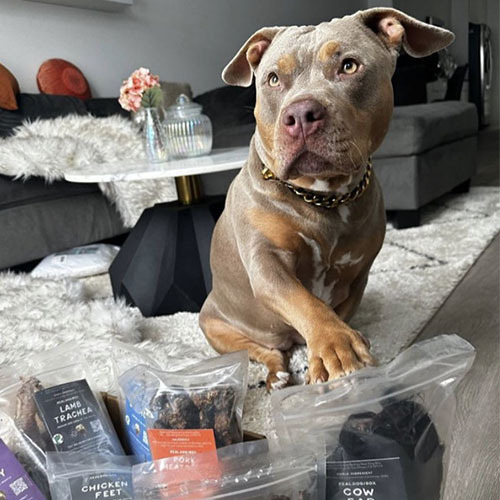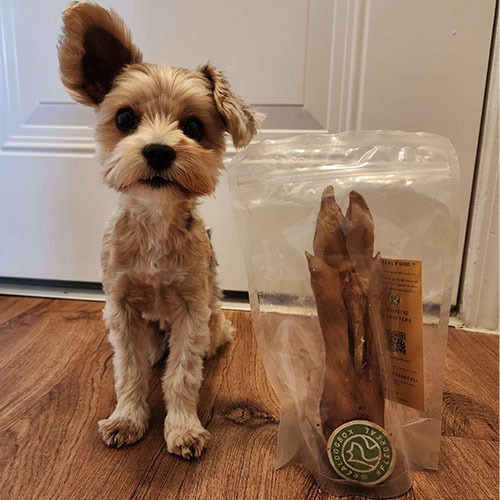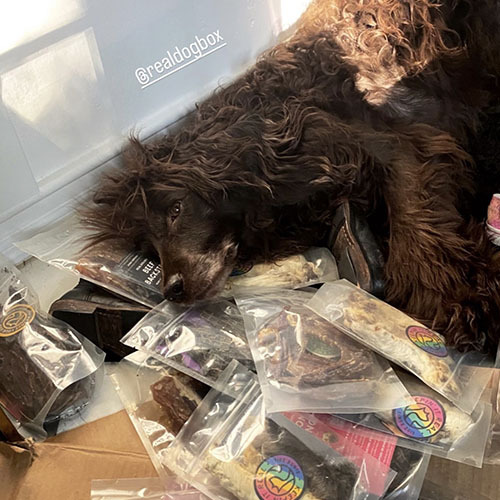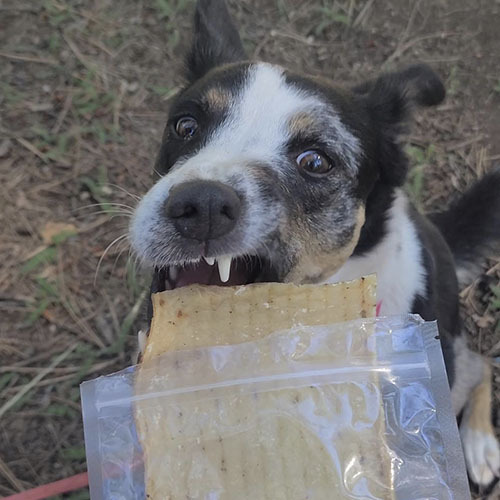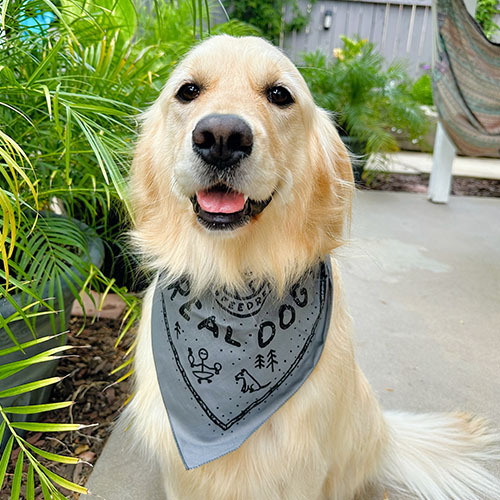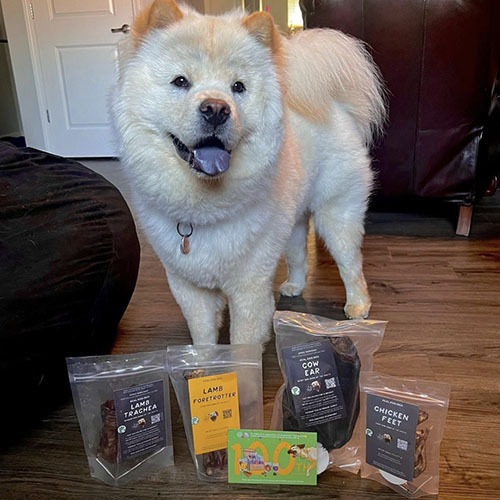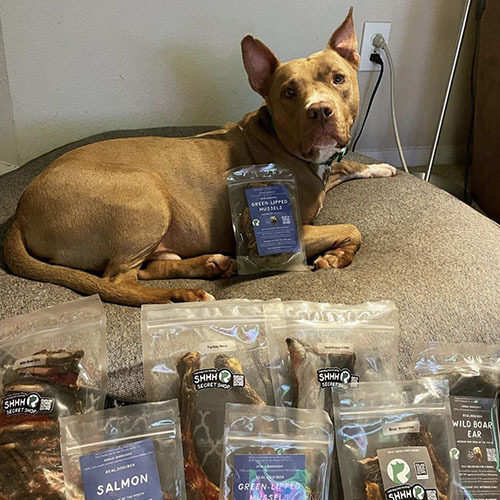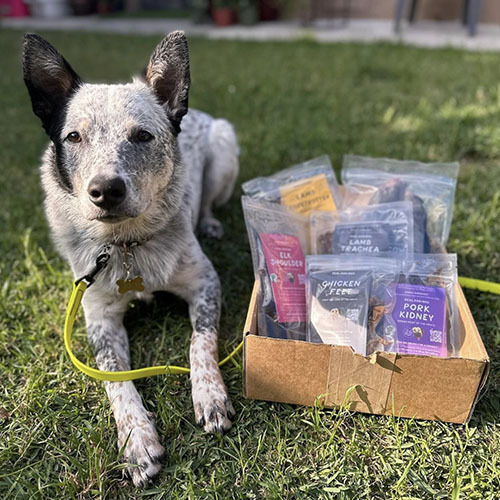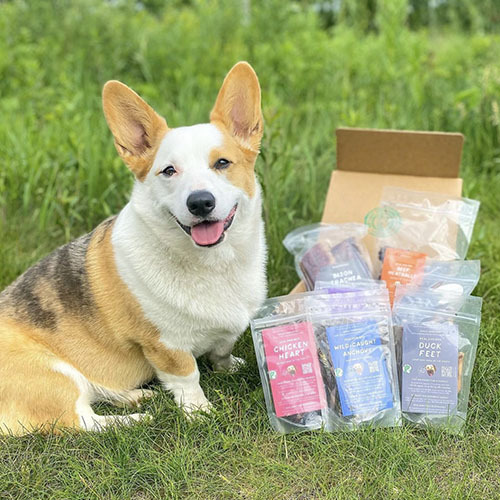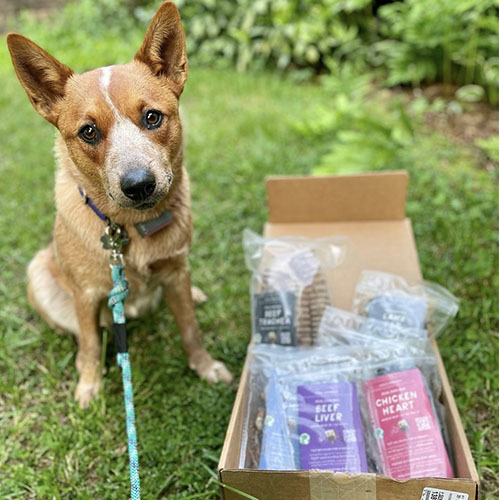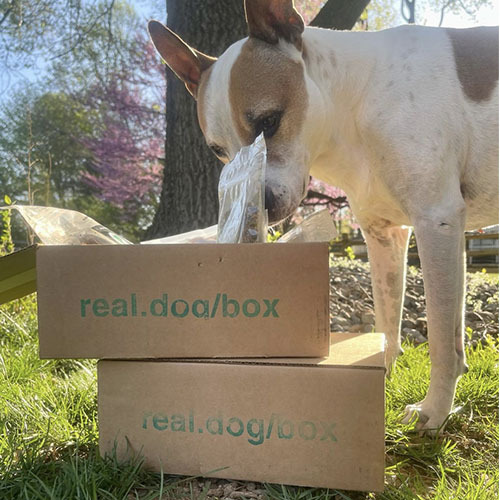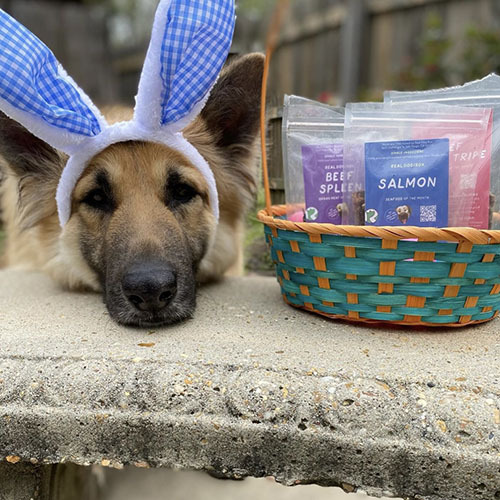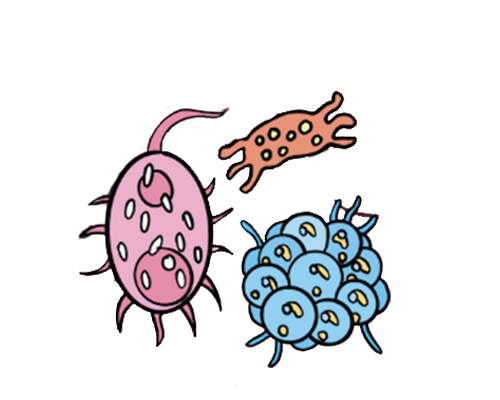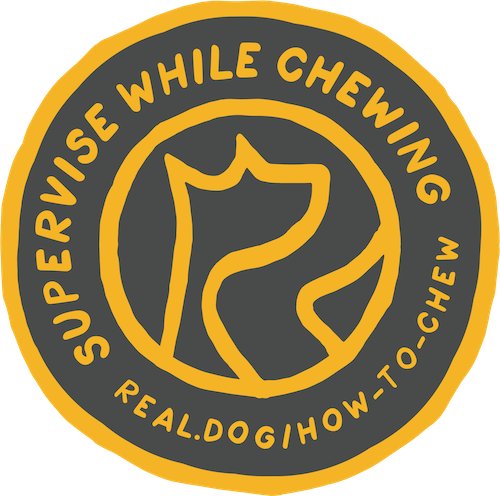
A Guide on How to Chew Real Dog Box Chews
Start Slow
Recommended Chew Session Time: 10 to 15 minutes maximum in one sitting.
Every dog is different and even 5 minutes may be too much in the beginning. Start with roughly 5 minutes and work your way up.
Depending on the dog and the chew strength, some chews may not last that long - that’s ok. If it’s your first time feeding, don’t be tempted to feed another chew on the same day. Wait until your dog’s next walk and inspect your dog’s poop to ensure a solid stool before introducing another chew.
If your dog is a fast and/or aggressive chewer, be mindful and watch for gulping. You don’t want your dog to inhale a chew and choke or swallow larger pieces that can be regurgitated.
Although regurgitation is normal and a natural defensive mechanism, you can help prevent this from happening by simply holding the chew while your dog chews or using a chew holder to slow them down. Giving your dog a safe and quiet space is ideal as you don't want them to rush or guard their resource.
"When in doubt, feed less than you think you should."
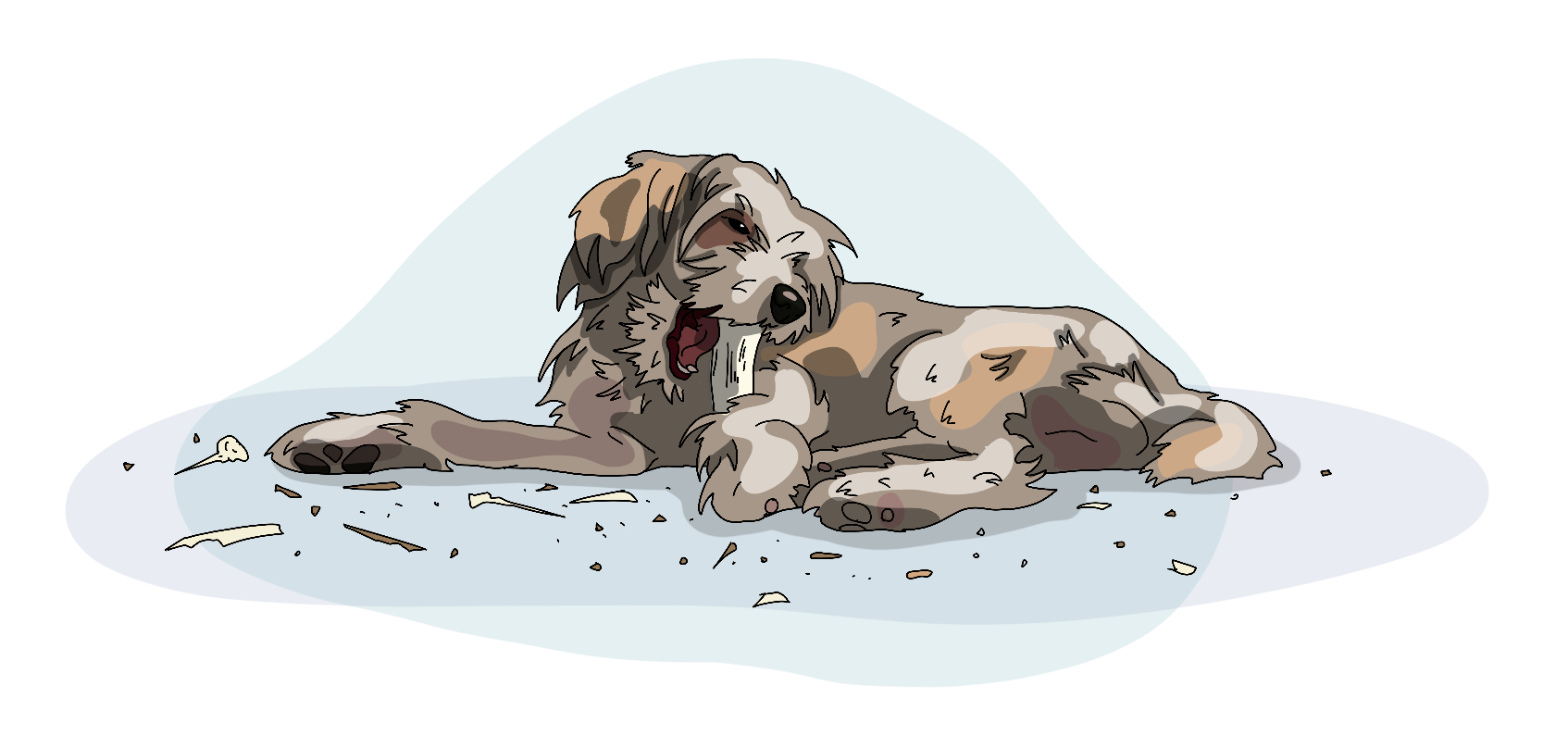

Introduce one protein at a time
Don’t introduce different proteins within the same 1-3 days, take it slow! You are probably just as excited as your pup is, but patience is a virtue!
Feeding too many new chews is almost guaranteed to cause digestive problems.
It’s helpful to have some fiber on hand, like slippery elm or marshmallow root powder. This additional natural fiber helps prevent loose stools. Feed the slippery elm mixture 30 minutes before introducing any new food.
If you forget to do this or don't have any slippery elm on hand, that's ok! Go slow when feeding your new chews and remember that a little adjustment period is normal.
Remember to #feedresponsibly and always supervise your dog while they are chewing.
Tips To Entice
1. Don’t give up! New items in the diet can be overwhelming. Stick with introducing slowly and one protein at a time! Do not offer another chew if your dog turns their nose up, just wait and put it away until the next day. “Picky dogs are made, not born that way.”
2. Try using the chew as a toy. Sometimes dogs won’t realize that the chew is edible until you start “playing” with it. You can throw the chew and play a game of fetch with it!
3. You can also offer it as the only chew for a few days. They may be holding out for other things they know they like. 😊 This means only their regular meals and then offering one specific item for a few days.
4. Add a thin layer of coconut oil or dog-safe peanut butter to get them started! Once they’ve tasted the chew they may become more excited.
5. And if none of that works, you can try rehydrating them in hot (not boiling) water until soft. Usually 5-10 minutes. This will change the smell and texture and oftentimes will get them interested!
Be Mindful Of Different Chew Styles
Sit and supervise your dog while they are chewing. This is a time to spend together. It’s not a time to drop the chew and walk away. Observe how they chew each item so you know what to expect the next time they enjoy it.
Ideally, you want your dog to slow down to get the teeth-cleaning benefits of real chews.
If they are going too fast for your comfort (CHAMPION CHEWERS AND GULPERS) you can:
- Make sure no other dogs (or children) are close by
- Hold the chew to slow them down
- Use a chew-holder
- Opt for a different chew
Sometimes their chewing style changes with age, condition of teeth, size of their mouth, size of the chew, and environment. Give your dog a chance with every new chew.
Varying Chew Strengths
We are all about variety. If you have a power chewer, don’t feel like you have to limit your dog to the toughest of chews!
We encourage feeding varying strengths of chews for nutritional variety as well as dental health benefits! Chews are not intended to be fed as a distraction for extended periods.
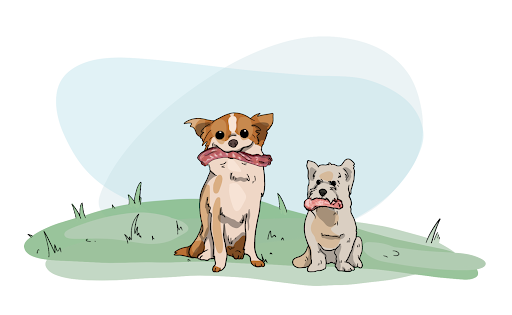
Light Chews: Due to their size, they’re often overlooked. These versatile chews can be turned into dog-friendly popsicle “handles” or easily fit into interactive feeding toys to make chewing more fun and stimulating. Light chews are great after a meal to help scrape off any plaque that may have started to build up from their meal.
Medium Chews: Slightly larger and stronger, these are often meaty and may include light bone. As they soften and become stringy during a chew session they help clean between teeth and massage the gums for improved circulation.
Heavy Chews: These tough chews are great for scraping hard tartar from teeth and cleaning along the gumline. They typically will last longer than light and medium chews and may require multiple feeding sessions to finish.
Super Chews: The strongest chews we offer! Super chews are larger, some are bone-in, and they’re intended to be fed over several sessions. These provide ample mental stimulation and help clean teeth naturally. Many small dogs enjoy super chews but they may be too much for seniors, puppies, or dogs with severe dental problems.
Bone-In Chew Safety

Typical indicators that a dog has had too much bone include
- chalky white poops
- vomiting
- diarrhea
Always remember to #FeedResponsibly

What About Splintering?
And for all of the next level chewers out there who want to take on a challenge, let me introduce you to our super chews!
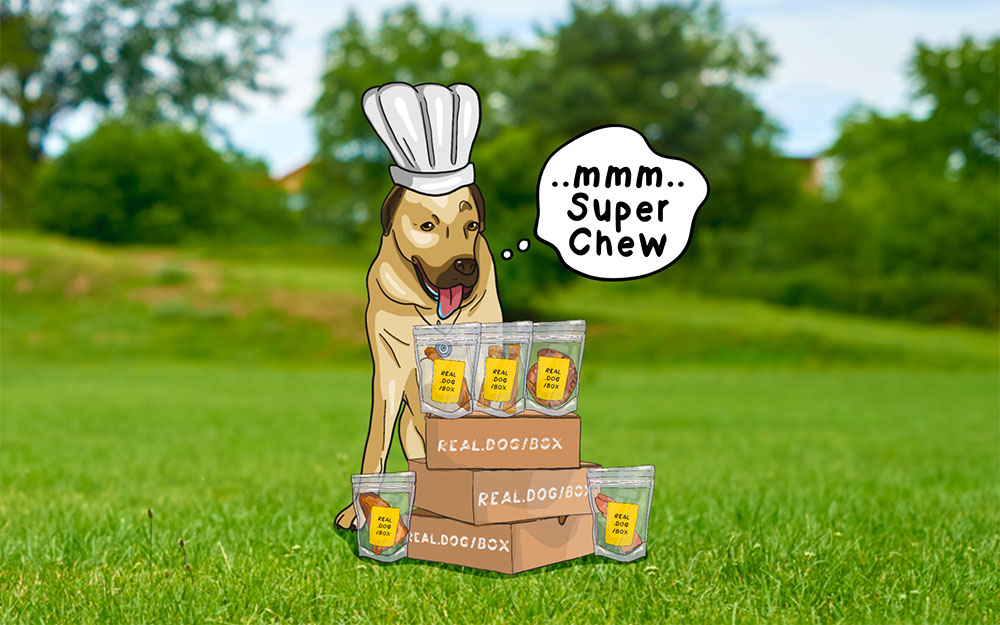
TIPS FOR ALL SUPERS!
Hold the super chew when introducing for the first time to your pup to get a feel for their chewing style, or if they are gulpers. Holding teaches them to slow down and actually chew, which prevents them from choking and makes for a longer lasting chew session!
Introduce the super chew in small intervals and short sessions. You don’t want to fee too much in the beginning and risk any GI upset.
If you notice any GI upset, feed in a smaller session next time around and feed some fiber beforehand like slippery elm. Slippery elm 30 minutes before should do the trick!
Chew sessions don’t need to last longer than 30 minutes for a mental stimulating activity and teeth cleaning. It’s not natural for dogs to chew extended periods of time. If you find the super chews aren’t lasting as long as you’d hope, you can freeze them for a longer chew session.
Pup not taking to the super chew? Here are some suggestions:
- Rehydrate! Start with rehydrating just one end of the super chew in hot (not boiling) water for at least 25 minutes until it softens. This opens up a new smell and texture which sometimes piques interest!
- Play with the chew! Dogs will become more interested in something if you make it fun. Play fetch or have your dog “work” for the chew by asking them to practice a few tricks or commands.
- Don’t offer an alternative! If you try to introduce the pig foot and your pup won’t take to it, don’t feed something different instead. Rejecting a new chew is not uncommon, so don’t give up on the first try! Dogs are smart and will hold out for other options if they know they will get one. Simply wait until later in the day or the next day to reintroduce again.

What are the benefits of Super Chews?
75% of dogs and cats over the age of three have periodontal disease, which affects the kidneys, liver, heart and lungs. Infections start in the mouth but can travel through the bloodstream if not taken care of properly. By feeding a super chew, you are providing nature’s best toothbrush.
Chewing on a super chew even just for a few minutes helps scrape off plaque and tartar. In turn, if you ditch any of the carbohydrate-filled dental chews and feed super chews instead, you are preventing plaque and tartar buildup. The chew is what acts as the toothbrush, whereas the meat acts as floss, and your pup gets to eat the entire super chew, which is the tastiest toothbrush I’ve ever heard of!
In addition to the dental benefits, chewing is a stress reliever and releases endorphins into the body. Without chewing, your pup is being deprived of an important function that is needed for jaw exercise, mental stimulation and to keep him from becoming bored!
It's an investment for your dog's life.
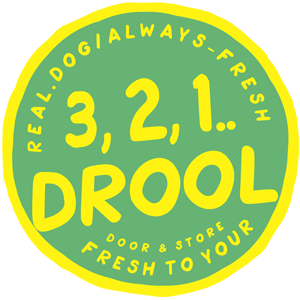 We craft our food in small batches, air-dry it in one single step, and deliver it fresh.
We craft our food in small batches, air-dry it in one single step, and deliver it fresh.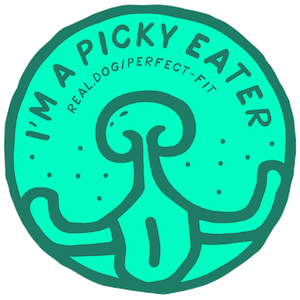 We guarantee that if your dog doesn’t love a treat, we’ll replace it for free.
We guarantee that if your dog doesn’t love a treat, we’ll replace it for free.